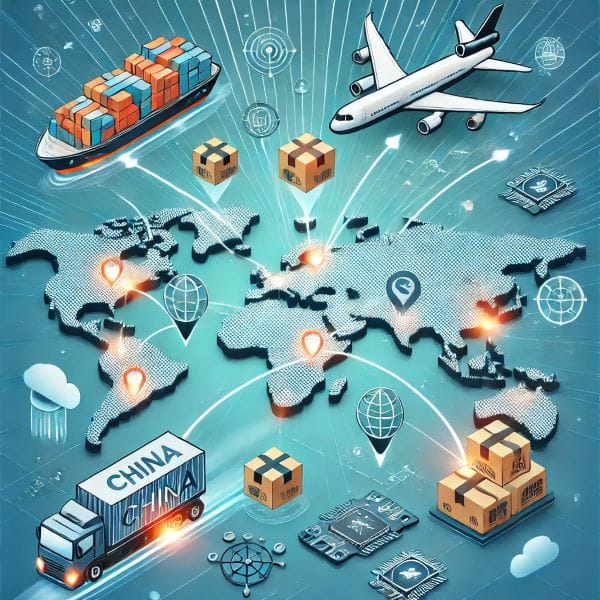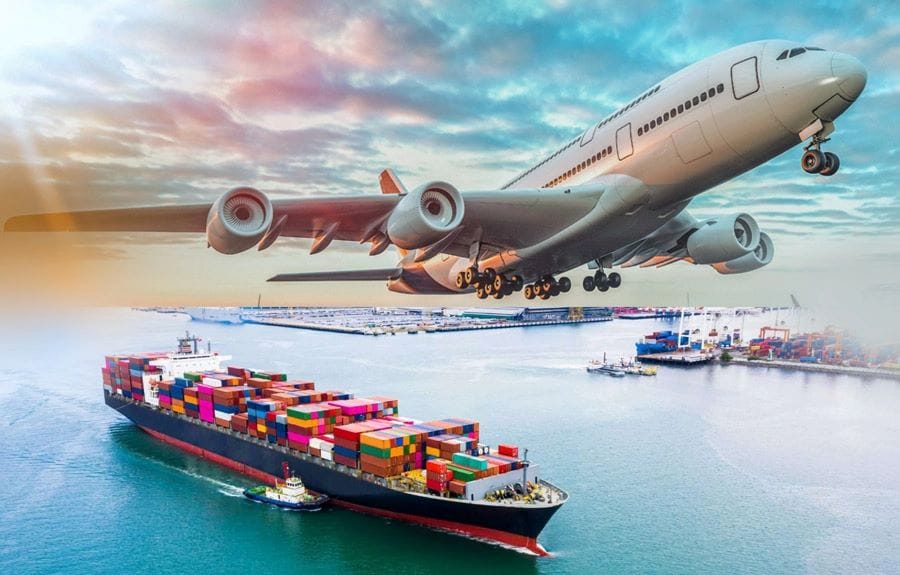Electronic products are an indispensable part of modern life. As the world’s largest electronic product manufacturing center, China offers a wide variety of electronic products, from personal electronic products to household appliances, and its transportation demand continues to grow worldwide. The following will introduce in detail how to transport electronic products efficiently and safely from China.

Overview of electronic products
Electronic products cover a wide range from smartphones, tablets, laptops to smart home devices and security monitoring systems. These products are usually high-tech, high-value and sensitive to the transportation environment.
Packaging and protection of electronic products
- Shockproof packaging: Use foam boards, bubble films and other materials to package products in multiple layers to prevent collisions and vibrations.
- Moisture-proof and dust-proof: Especially for long-distance transportation, sealed packaging and moisture-proof agents must be used.
- Anti-static packaging: Chips, circuit boards, etc. need to be packaged in anti-static bags to prevent static damage.
- External protection: Use sturdy cartons or wooden boxes for packaging, and mark the outside with labels such as “fragile” and “avoid moisture”.
- Battery management: Products containing lithium batteries must follow the relevant regulations of the International Air Transport Association (IATA) to ensure safe transportation.
Understand the Import Regulations for Electronic Devices
When importing electronic products from China, it is important to understand the various import regulations and laws that apply in your country. In most cases, suppliers need to comply with standards such as the US FCC and the EU CE or REACH. However, it can be difficult to find suppliers that comply with all of these standards and laws.
Therefore, it is crucial to thoroughly research the relevant import regulations and tax implications. These regulations include CE marking, RoHS, REACH, FCC, UL, GS, R&TTE, LVD, EMC, etc. You should also understand the 10-digit commodity code for each product, as these codes provide important details about the product, including rates and restrictions.
- CE Mark (EU): The CE mark is a safety certification mark that is a manufacturer’s passport to open and enter the European market. All products imported into the EU must be affixed with the CE mark.
- FCC (US): The Federal Communications Commission (FCC) is responsible for regulating all electronic products, including WiFi, Bluetooth, and radio transmission equipment. Any electronic device (electronic and emitting radio waves) must be FCC certified before it can be imported into the United States.
- RoHS (EU): The RoHS directive restricts the use of certain hazardous substances in electrical and electronic equipment. Products imported into the EU must comply with this directive.
- UL (US): UL is a certification company that certifies products according to different standards. Although not required by law, it is recommended that retailers importing products into the United States obtain certification.
Shipping Electronic Products from China
Choose different modes of transport according to the weight of the goods: air, sea, rail and express.
Sea Freight
Sea Freight is suitable for large quantities of electronic products, especially cost-sensitive goods. Although the timeliness is not as good as air shipping, the transportation cost is lower. It is mainly divided into two service types, FCL and LCL, which are selected according to budget and security.
Air Freight
Air shipping is suitable for the transportation of high-value electronic products with high timeliness requirements. The advantages are fast and safe, but the cost is higher and is affected by air traffic control and flight arrangements.
Rail Freight
Suitable for the transportation of electronic products from China to Europe, rail is a compromise option, which is faster than sea shipping, but more affordable than air shipping, and has both speed and cost advantages.
Express Service
For small quantities of urgently needed electronic products, you can choose international express services such as DHL, FedEx or UPS. The door-to-door service seller bears all responsibilities and costs for transporting the goods until the goods arrive at the buyer’s location.
For more information, please refer to the following articles on shipping from China to other countries:
- Shipping from China to USA
- Shipping From China to Canada
- Shipping From China to France
- Shipping From China to Saudi Arabia
- Shipping from China to UAE
- Shipping from China to Turkey

Cost of Shipping Electronic Products from China
Estimating shipping costs involves many aspects, including:
- Cargo volume and weight: The weight and volume of electronic products directly affect the shipping costs. For heavier or larger products, the shipping company may calculate the cost based on weight or volume (volumetric weight).
- Transportation mode: air transport is usually more expensive, while sea transport is relatively cheap.
- Insurance cost: usually calculated based on the insured value of the goods, the premium is not high, but it is essential to ensure the safety of the goods.
- Seasonal factors: transportation demand and transportation volume may fluctuate greatly in different seasons, resulting in price increases.
- Tariffs and taxes: Electronic products are usually subject to higher tariffs, especially consumer electronics. Usually, the calculation of tariffs is based on the classification, value, origin and other factors of the goods. Knowing the tariff policy of the target country in advance will help estimate the cost after arriving at the destination.
Duties and Import Taxes
Different electronic products have different import duty rates based on the Harmonized System (HS) code classification.
- US: Most consumer electronics (smartphones, laptops, game consoles) have zero import duty, but household appliances and industrial electronics may be subject to duties of 5%-25%.
- EU: Most electronic products are subject to import duties of 0%–14%, depending on the classification.
- Middle East: Many countries, such as the UAE and Saudi Arabia, have a standard import duty of 5%.
Documents and Documents Required for Shipping Electronic Products
Customs clearance is an important part of international transportation of electronic products, and a series of documents and certificates need to be prepared:
- Commercial invoice: clearly specify product description, unit price, total price and other information.
- Packing list: a detailed list of goods, including specifications and quantities.
- Certificate of origin: used for tariff preferences or compliance with the policies of the importing country.
- Transportation insurance policy: to protect risks during transportation.
- MSDS (Material Safety Data Sheet): if lithium batteries or dangerous goods are involved.
Learn more: Customs Clearance and Fees
How to Choose the Right Freight Forwarder
There are many regulations to comply with when shipping electronic products, so you need a professional freight forwarder to help you complete them. The following are the factors to consider when choosing a freight forwarder
Professionalism
Choose a company that is familiar with the characteristics of electronic product transportation.
Service network
Make sure the freight forwarder has a global transportation network.
Customer service
Provide 24/7 support to solve transportation problems in a timely manner.
Price transparency
Avoid hidden fees and choose a company with clear quotes.
Reputation and reviews
Check the company’s past customer reviews and recommendations.
Shipping electronic products from China to the world is a complex process. Learn about the challenges of shipping electronic products through this article, and choose a professional freight forwarding company and the right strategy to ensure successful transportation.
